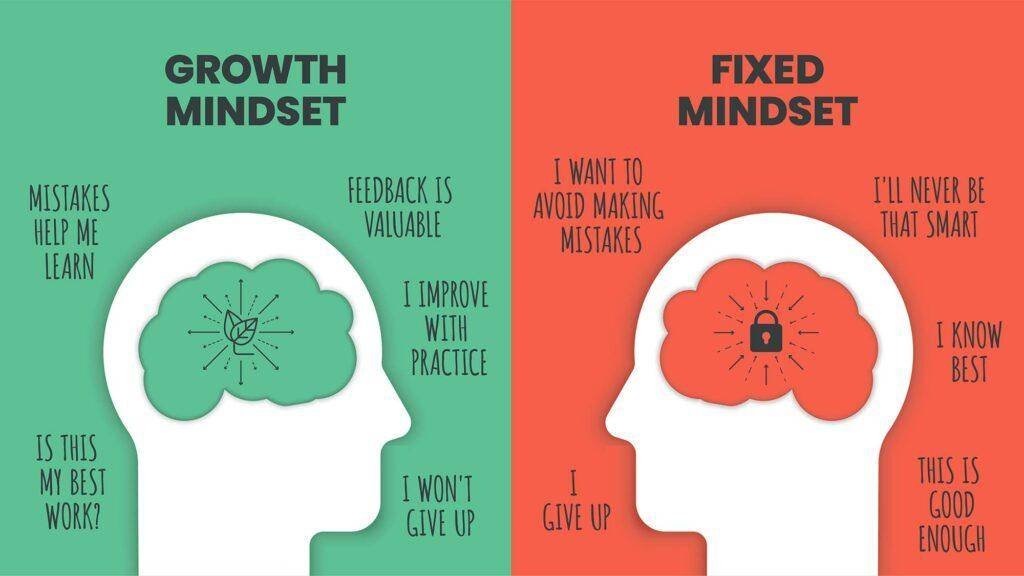In the bustling world of sales, where connections are currency and conversation is key, the role of a Sales Development Representative (SDR) stands out as a vital cornerstone.
Whether you’re a budding SDR eager to hone your craft or a seasoned professional looking to refresh your toolkit, understanding these essential skills is crucial.
Join us as we explore the key abilities that make an SDR shine in this dynamic landscape, transforming cold calls into warm connections and prospects into loyal customers—all with a friendly smile and a sprinkle of creativity!
Table of Contents
ToggleMastering the Art of Listening
Listening is more than just hearing words; it’s about understanding the underlying needs, desires, and emotions of your prospects.
This essential skill can make or break an SDR’s success.
Empathize with Prospects: Show genuine interest in the person on the other end. Understanding their problems and expressing empathy helps build trust and rapport, essential in fostering long-term relationships.
- Active Listening: Pay attention to the speaker, resist the urge to interrupt, and provide feedback to show comprehension.
- Reflective Listening: Mirror their thoughts and feelings. Repeat back key points to confirm understanding.
- Non-verbal Cues: Recognize and interpret facial expressions and body language, even over video calls.
An effective SDR knows how to balance talking and listening. Asking insightful questions can draw out more detailed information that can inform your approach.
| Listening Skill | Benefit |
|---|---|
| Active Listening | Ensures clear understanding |
| Empathy | Builds stronger connections |
| Non-verbal Observation | Deciphers unspoken concerns |
Remember, listening is a two-way street. It’s not only about gaining information but also about creating a positive experience for your prospects.
Every interaction should leave them feeling heard, respected, and valued.
Crafting Compelling Cold Emails
One of the most valuable skills for a Sales Development Representative (SDR) is the ability to create cold emails that not only grab attention but also foster engagement. This requires a blend of creativity, empathy, and precision.
To craft compelling cold emails, SDRs should focus on:
- Personalization: Tailor your emails to the recipient by referencing their interests or company achievements. A personalized touch makes your email stand out and shows that you’ve done your homework.
- Conciseness: Brevity is key. Keep your message short, simple, and to the point. Busy professionals appreciate emails that respect their time.
- Clear Value Proposition: Communicate the benefit of your product or service clearly. Tell the recipient how it will solve their problem or improve their business.
Additionally, making use of well-structured tables can help convey information efficiently:
| Element | Best Practices |
|---|---|
| Subject Line | Keep it short, include the recipient’s name, and hint at the email’s value. |
| Opening Sentence | Engage with a question or relevant fact about the recipient’s company. |
| Call to Action | Be clear and specific about what you want the recipient to do next. |
Empathy plays a significant role in crafting these emails. It’s important for an SDR to step into the recipient’s shoes, understanding their challenges and how your solution can address those needs.
This empathetic approach can turn a cold email into a warm opportunity for conversation.
Storytelling can be a powerful tool. Share a brief story or case study that demonstrates how your product has helped others in similar situations. This not only makes your email more engaging but also builds credibility and trust.
Navigating Objections Like a Pro
Handling objections is not a skill you’re born with; it’s something you master over time. For Sales Development Representatives (SDRs) to excel, they need a precise mix of techniques and a good dose of patience.
Here are several ways to navigate objections like a pro:
- Listen Actively: It’s crucial to genuinely listen to the potential client’s objection. Often, the underlying reason for their concern isn’t what’s immediately presented. By active listening, you demonstrate empathy and understanding, which in turn builds trust.
- Ask Open-Ended Questions: This approach invites prospects to delve deeper into their concerns, giving you more information to address their objections effectively. For instance, “Can you tell me more about your current challenges with this solution?” opens the door for a more comprehensive discussion.
- Stay Calm and Positive: Maintaining a positive demeanor, even when objections are robust, helps diffuse tension. Positivity can often turn around even the most stubborn objections.
Common Objections and Responses
| Objection | Professional Response |
|---|---|
| “It’s too expensive.” | “I understand that budget is a concern. Can you elaborate on what you’d consider a good value for your investment?” |
| “We’re happy with our current solution.” | “That’s great to hear! What specific features or aspects do you find most beneficial?” |
| “I don’t have time to talk now.” | “I appreciate your busy schedule. When would be a convenient time for a brief follow-up?” |
Framework for Handling Objections
- Empathize: Always start by acknowledging the prospect’s concern. This shows respect and attentiveness.
- Clarify: Ask questions to clarify the objection, ensuring you fully understand the prospect’s point of view.
- Respond: Tailor your response to address their specific concern. Use evidence-based information whenever possible to support your answers.
By mastering these techniques, SDRs can turn objections from roadblocks into opportunities.
Navigating objections is not just about overcoming resistance; it’s about building a deeper connection with prospects and providing solutions that genuinely meet their needs.
Building Rapport that Resonates
- Paraphrasing what the client says.
- Asking open-ended questions.
- Nodding and using verbal cues like “I see” or ”Go on.”
Secondly, engaging empathetically is essential in building trust.
Empathy bridges the emotional gap and helps you understand the client’s emotions and perspectives. Empathetic engagement can be embodied by:
- Expressing genuine concern.
- Relating to the client’s situation.
- Offering personalized solutions.
Lastly, adopting a client-centric approach ensures alignment with the client’s needs and goals. Here’s a quick comparison of the traditional vs. client-centric approach:
| Traditional Approach | Client-Centric Approach |
|---|---|
| Sales-focused | Solution-focused |
| Generic pitches | Tailored communication |
| Quick close | Long-term relationship |
Harnessing the Power of CRM Tools
- Data Entry and Maintenance: Accurate data entry ensures that the sales funnel remains clean and actionable. Knowing how to efficiently input and update customer information is essential.
- Pipeline Management: A deep understanding of managing the sales pipeline ensures that no lead goes unnoticed. This includes knowing when to follow up and when to nurture leads for future opportunities.
- Analytical Skills: CRMs come with a wealth of analytics capabilities. An SDR should be able to interpret these analytics to understand customer behavior and predict future actions.
- Automation Utilization: Modern CRM tools offer automation for routine tasks like sending follow-up emails or scheduling calls. Mastery of these features frees up time for more strategic activities.
| Skill | Benefit |
|---|---|
| Data Entry | Ensures accurate customer information |
| Pipeline Management | Keeps track of lead progress |
| Analytical Skills | Provides insightful data interpretations |
| Automation | Saves time on routine tasks |
The power of CRM tools, when harnessed effectively, can be the key to soaring success in sales development.

Turning Rejections into Opportunities
Every ‘no’ you encounter is a stepping stone to a valuable learning experience, an indispensable skill for a Sales Development Representative (SDR).
Reframing rejection as an opportunity not only thickens your skin but also sharpens your ability to pivot your approach. Imagine each refusal as feedback; what didn’t work? What can be improved? By focusing on actionable insights, you turn a potential setback into a strategy for success.
When faced with rejection, empathy and active listening become your secret weapons.
Tune into the concerns or reasons behind a prospect’s “no” and respond with solutions tailored to their needs. This can foster trust and open future doors that might have seemed firmly closed.
Empathizing with a prospect’s pain points can make them more receptive to your next pitch.
Moreover, taking ownership and responsibility for your pipeline management is crucial.
Think of rejection as a way to enhance your organizational skills. Keeping a detailed account of each interaction—what questions were asked, what objections were raised—can help you refine your process.
This meticulous attention to detail ensures you’re always prepared, turning rejection into a learning tool rather than a dead end.
Consider utilizing a structured approach to track and analyze rejections:
| Factors | Questions to Ask | Action Steps |
|---|---|---|
| Reason for Rejection | Why did they say no? | Refine value proposition |
| Prospect Pain Points | What are their challenges? | Tailor solutions |
| Engagement Level | How engaged were they? | Improve initial outreach |
By consistently applying these practices, you’ll transform the nature of rejections from disheartening to insightful, unlocking new opportunities for growth and connection. Every refusal is an untapped lesson waiting to be integrated into your next successful pitch.

Developing a Resilient Mindset
Dealing with rejection is part and parcel of the SDR’s (Sales Development Representative’s) journey. doesn’t happen overnight—it’s built with each obstacle and setback encountered.
This kind of mental toughness can transform challenges into new opportunities for growth.
Resilience isn’t just about bouncing back; it’s about bouncing forward, stronger and wiser.
Here are a few key elements you should incorporate to build resilience:
- Embrace Failure: Viewing failures as stepping stones rather than stumbling blocks can dramatically shift your perspective. Every “no” is a chance to refine your approach.
- Stay Positive: Maintaining a positive attitude even in the face of adversity can elevate your overall performance. It’s not about ignoring the bad; it’s about focusing on the good.
- Continuous Learning: Adopting a mindset of constant growth will help you adapt and evolve. Sign up for webinars, read industry blogs, and always be on the lookout for new insights.
What about tracking your own growth? Keeping a journal can be a valuable tool to document your experiences, challenges, and triumphs. This not only helps in self-reflection but also provides a roadmap to measure how far you’ve come. Here’s a simple way to track it:
| Metric | Before | After |
|---|---|---|
| Number of Rejections | 50 | 25 |
| Response Rate | 5% | 10% |
| Positive Feedback | 3 | 10 |
Lastly, surround yourself with a support network. Whether it’s fellow SDRs, mentors, or friends, having people to turn to for encouragement and advice can make all the difference.
Remember, resilience is as much about internal strength as it is about external support.
Spotting and Seizing Sales Triggers
An essential skill for any Sales Development Representative (SDR) is to effectively recognize and capitalize on sales triggers.
These are external signals that indicate a prospect might be ready or more open to purchasing your product or service.
Ignoring these cues means missed opportunities, while timely action can significantly improve conversion rates.
Here are some common triggers to watch for:
- Company Expansion: If your target company announces growth initiatives like new offices, product launches, or hiring sprees, they are likely in need of additional resources or tools to manage the growth.
- Funding Rounds: Companies that have recently secured funding often have the budget to invest in new solutions. A quick reach out to congratulate them on their achievement can seamlessly transition into a discussion about how your product can support their next phase of growth.
- Management Changes: New leaders or C-suite executives often bring in new goals and may prioritize technology revamps or efficiency improvements. Being aware of such changes can help you align your pitch with the new vision.
Effective SDRs don’t just stop at identification; they act swiftly. Here’s a simple table of actionable steps post-identification:
| Trigger | Action |
|---|---|
| Company Expansion | Send a tailored email highlighting how your product can aid in managing new challenges efficiently. |
| Funding Rounds | Call to congratulate and segue into discussing how your solution can leverage their new funds effectively. |
| Management Changes | Research the new executive’s past focus areas and format your pitch to show alignment with their likely priorities. |
Seizing these moments requires a mix of timely action, relevant communication, and an empathetic approach.
Personalized messages that address the specific circumstances and offer clear, immediate value will stand out in the clutter of generic sales pitches.
Remember, the key is to be helpful, not pushy. Happy prospecting!
FAQ
Q: What exactly does a Sales Development Representative (SDR) do?
A: Great question! An SDR is like the friendly gatekeeper of the sales world. They are the first point of contact for potential customers, responsible for reaching out, qualifying leads, and setting up meetings for the sales team. Think of them as the bridge between curiosity and commitment!
Q: What are the top skills an SDR should have?
A: Ah, the magic skill set! Here’s the scoop:
- Communication: SDRs should have a knack for both written and verbal communication. They must be able to convey information clearly and persuasively, whether in an email or a phone call.
- Active Listening: This isn’t just about talking; it’s about really hearing what prospects say. Active listening allows SDRs to understand customer needs and tailor their approach accordingly.
- Resilience: Rejection is part of the job. SDRs experience “no” more often than a toddler asking for candy! Resilience helps them bounce back and keep going.
- Time Management: Juggling calls, emails, and research requires a mastery of time management. Being organized means they can maximize their outreach without feeling overwhelmed.
- Adaptability: Every prospect is different. SDRs must adapt their pitch and approach based on the conversation and the unique needs of the person they’re speaking to.
Q: Are there any technical skills that are beneficial for an SDR?
A: Absolutely! While charming personality traits are a must, technical skills help too. Familiarity with Customer Relationship Management (CRM) tools (like Salesforce or HubSpot) is essential for managing leads and tracking progress. Being able to navigate social media platforms, especially LinkedIn, can also be a game-changer for finding and engaging prospects.
Q: What is the role of emotional intelligence in an SDR’s success?
A: Emotional intelligence (EQ) is like the secret sauce! An SDR with high EQ can read the room, understand customer motivations, and respond with empathy. It helps build rapport quickly, making prospects feel valued and heard—ultimately paving the way for trust!
Q: How can someone develop these skills?
A: Here’s the silver lining: many of these skills can be cultivated! Here are some tips:
- Practice communication by joining public speaking clubs (like Toastmasters) or engaging in role-playing exercises.
- Enhance active listening by focusing fully on conversations and summarizing what you’ve heard.
- Foster resilience by setting personal goals and celebrating small wins, even when faced with rejection.
- Get organized with tools like calendars or task management apps to fine-tune your time management skills.
- Keep learning! Online courses, books, and webinars on sales techniques and emotional intelligence can help sharpen your expertise.
Q: What’s your final piece of advice for aspiring SDRs?
A: Embrace the journey! Becoming a fantastic SDR is an exciting adventure filled with learning and growth. Be curious, stay persistent, and remember to celebrate your successes, no matter how small—they all count on the road to becoming a sales superstar! 🌟
Insights and Conclusions
As we wrap up our exploration of the key skills needed for a successful Sales Development Representative, it’s clear that this role is not just about making calls and sending emails. It’s a dynamic blend of communication, persistence, and adaptability that turns potential leads into meaningful connections.
Remember, each conversation is an opportunity, every “no” a stepping stone to that elusive “yes.” Embrace continuous learning and reflect on your growth—after all, the sales world is ever-evolving!
So, whether you’re just starting out or looking to polish your prowess, take these skills to heart. Approach each day with curiosity and confidence, and you’ll not only hone your craft as an SDR but also make a significant impact on the teams and clients you engage with.
Now go out there and shine—your next big breakthrough is just around the corner!







